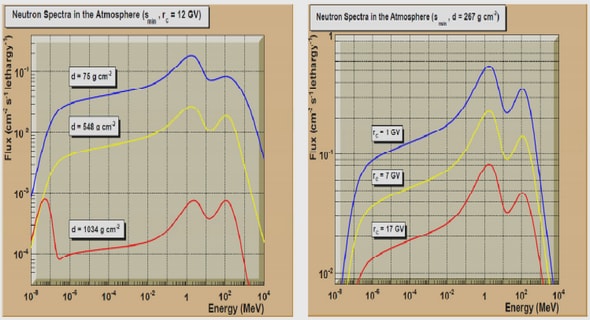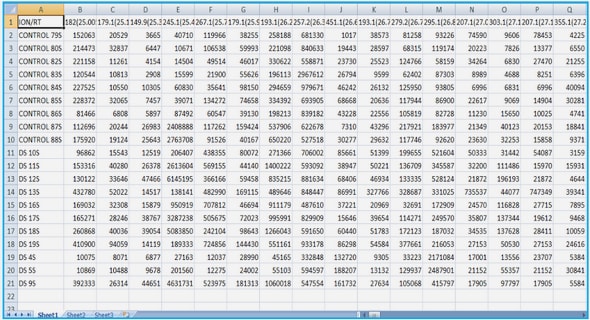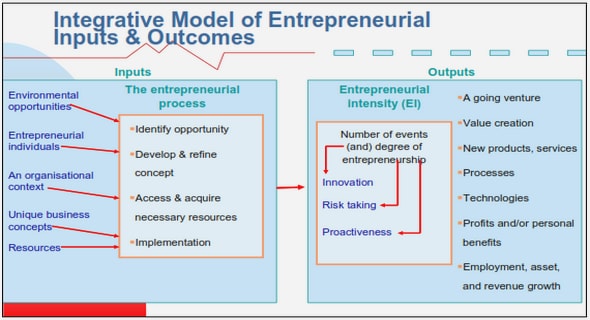Get Complete Project Material File(s) Now! »
Comprehensive Lipidome Profiling of Sauvignon Blanc Grape Juice
Sergey Tumanov1, Yuri Zubenko1#, David R. Greenwood1,2,Vadim Shmanai3, Silas G. Villas-Boas1
– School of Biological Sciences, The University of Auckland, 3A Symonds Street, Auckland 1142,New Zealand
– New Zealand Institute for Plant & Food Research Limited, 120 Mt Albert Rd, Sandringham,Auckland 1025, New Zealand
– National Academy of Science, Institute of Physical Organic Chemistry, 13 Surganova Street, Minsk 220050, Belarus
Abstract
This study presents a comprehensive lipidome analysis of Sauvignon Blanc grape juice by combining GC-MS based fatty acid profiling with shotgun lipidomics strategy. We observed that despite grape juice being a water based matrix it contains a diverse range of lipid species, including common saturated and unsaturated free and intact fatty acids as well as odd-numbered and hydroxy fatty acids. Based on GC-MS quantitative data of 217 grape juices from three different vintages, we found that the total lipid content could be as high as 2.8 g/L. The majority of lipids were present in the form of complex lipids with relatively small amount of free fatty acids (<15%). Therefore we concluded that the lipidome should be considered an important component of grape juice with the potential to impact on fermentation processes as well as on the sensorial properties of fermented products. This work serves as a hypothesis generating tool, the results of which justify follow-up studies to explore the influence of the grape juice lipidome and lipid metabolism in yeast on the aroma profile of wine.
Introduction
Grape juice is a water-based sugar-rich medium containing different classes of metabolites with concentrations ranging from mg/L (methionine, lysine) (Huang et al., 1991) to g/L (malic acid, tartaric acid) (Mato et al., 2007), which provides a nutritive environment under s tressful anaerobic conditions for yeasts during the alcoholic fermentation process. Saccharomyces cerevisiae can grow in the presence of a small spectrum of indispensable organic and inorganic compounds but cell growth under the hypoxic conditions of wine fermentation is limited without an exogenous source of unsaturated fatty acids (UFAs) and ergosterol (Varela et al., 2012). Anaerobic conditions combined with poor lipid supplementation govern a chain of morphological changes in S. cerevisiae cells (Landolfo et al., 2010) that lead to the activation of biochemical pathways requiring NADPH and subsequently, the production of high levels of reactive oxygen species (ROS) (Rosenfeld et al., 2003; Landolfo et al., 2010) producing oxidative stress on the yeast cells (Landolfo et al., 2010; Landolfo et al., 2008). Biosynthesis of fatty acid molecules is important for the maintenance of structural cell components such as glycerophospholipids, which regulate the physical properties of cell membranes under metabolic stress (Quehenberger et al., 2011; Landolfo et al., 2010). It has previously been observed that an increase in unsaturation index in plasma membrane lipids provides yeast cells with higher ethanol tolerance during fermentation (Alexandre et al., 1994; Thomas et al., 1978; You et al., 2003). However, under hypoxic conditions the biosynthesis of unsaturated fatty acids is repressed, reducing the viability of yeasts (Mannazzu et al., 2008; Landolfo et al., 2010). The inability of S. cerevisiae cells to acquire complex lipids (i.e. triacylglycerols) from the extracellular medium makes them highly dependent on exogenous sources of unsaturated fatty acids (Dyer et al., 2002). Since S. cerevisiae cannot utilise complex lipids (Dyer et al., 2002), exogenous phospholipids and glycerolipids can be a potential source of free fatty acids (FFAs) for yeast utilisation, which are liberated through lipolytic activity of enzymes supplemented to grape juice or through co-culturing with lipase-secreting microorganisms.Despite a plethora of studies reporting the amino- and organic acid profile of grape juices and their effect on yeast metabolism in wine fermentation, there is no study that we are aware of characterising comprehensively the lipid profiling of grape juice. This is somewhat surprising since previous studies have shown that the availability of free fatty acids in grape juice affects yeast metabolism, significantly altering the production of varietal aroma compounds, which is clearly pertinent to wine production (Varela et al., 2012; Pinu et al., 2014). Varela et al. (2012) demonstrated that unsaturated fatty acids and ergosterol supplementation stimulates the production of esters, higher alcohols and volatile fatty acids in Chardonnay wines and Pinu et al. (2014) reported a reduction in the level of acetate esters and 3mercaptohexyl acetate (passionfruit aroma) in Sauvignon Blanc wines with the direct supplementation of linoleic acid to the juice prior to fermentation. Pinu et al. (2014) also indicated that the aroma profiles were affected differently depending on the amount of linoleic acid supplemented in the juice (Pinu et al., 2014).The important physiological role of lipid molecules in yeast cells and recent discoveries of their influence in the wine aroma profile provide convincing reasons to explore the lipidome of grape juice. Although a number of methods have been described for fatty acid profiling (Quehenberger et al., 2011; Wiesman et al., 2009; Connerth et al., 2009; Abdulkadir et al., 2008; Akoto et al., 2008; Armstrong et al.,2008; Cantellops et al., 1999; Glaser et al., 2010; Mazalli et al., 2007; et al., 1997; Rodriguez-Palmero et al., 1997; Ulberth et al., 1995), they often involve laborious procedures with several extraction steps and a combination of different solvents, anhydrous conditions and freezing cycles, which make sample preparation very time consuming. Moreover, the high sugar content in grape juice poses a significant problem to profile and quantify lipids at their trace levels due to the matrix effect. These factors have encouraged the optimisation of high-throughput and robust fatty acid profiling methods. The principle of these methods is based on GC-MS analysis of fatty acid methyl esters (FAMEs) or their analogues generated by the derivatisation of FFAs after the saponification of complex lipids.In this work, we present a comprehensive Sauvignon Blanc grape juice lipidome study that quantifies and differentiates free fatty acids from total fatty acids available in a wide range of Sauvignon Blanc grape juices harvested in different geographical locations in New Zealand over three consecutive vintages as well as shotgun lipidomics data of selected juices which together provide a resource for wine science research.
Experimental Section
Chemicals
Methanol, chloroform, pyridine, potassium hydroxide, 2,6-bis(1,1dimethylethyl)-4-methylphenol (butylated hydroxytoluene, BHT), anhydrous sodium sulphate, nonadecanoic acid, d4-alanine and methyl chloroformate (MCF) were purchased from Sigma-Aldrich. Standard mixtures of fatty acid methyl esters (FAME37) and both GLC-458 and GLC-455 standard mixtures were purchased from Sigma-Aldrich and Nu-Check Prep, Inc., respectively. Internal standard trinonadecanoin (TAG 19:0/19:0/19:0) was purchased from Nu-Check Prep, Inc. Internal standard triethanolamino trimyristate (TEM) was purchased from Omics Biochemicals Limited (Auckland, New Zealand).
Grape juice samples
In total 217 Sauvignon Blanc grape juices were used in this study including 10 juices from 2010, 105 juices from 2011 and 102 juices from 2012 vintages. Selected wineries from across New Zealand, with an emphasis on Marlborough, were invited to contribute juices from their vineyard blocks to participate in the Juice Index project. This project was part of the Sauvignon Blanc II Programme (C11X1005) which was started in 2010-2011. That year approximately 180 different juices were analysed and made into wine. For the 2011-2012 seasons, mostly juices from the same vineyard blocks as the previous year were used.Commercial fruit was harvested and processed by each company in its own particular way with its own sulphur additions. At this point no yeasts are added to grape juice. For each vineyard block juice, three new 1 L bottles were sent to the wineries. All wineries were asked to fill these bottles with clear juice (after cold stabilisation, just before fermentation) with each juice clearly coded. The juices were kept in at 4oC at the wineries until collection the same day by Plant and Food Research (PFR).After overnight cold storage in the PFR laboratory, the three bottles of juice were consolidated into one sample before sub-sampling for the individual analyses and winemaking. For the chemical analyses of the juice, exactly 60 mL of juice was decanted in new 70 mL specimen bottles to which 0.48 mL of 50 mM solution d4-alanine was added as internal standard. For winemaking, one litre plastic bottles were filled with 700 mL of juice and all the air was removed from the bottles by squeezing them in order to prevent oxidative processes before the juice would actually be frozen. All juice samples were frozen at -20 oC, until processing. Juice samples were thawed at 4°C for 8 hours prior to sample preparation.
Quantitation of free fatty acids
1 mL sample of each grape juice in triplicates were mixed with an aliquot of nonadecanoic acid which was used as an internal standard. The juice sample was then freeze-dried using a BenchTop K manifold freeze dryer (VirTis, SP Scientific, Warminster, PA, USA) and derivatised using methyl chloroformate (MCF) as described previously (Smart et al., 2010), followed by GC-MS analysis.
Quantitation of total fatty acids
Lipid extraction
A modified Bligh and Dyer method (Bligh et al., 1959) was applied for lipid extraction from grape juice samples. In summary, 3 mL of each grape juice sample in triplicate were mixed with 3 mL of chloroform-methanol mixture (1:2, v/v), 50 μg of BHT to prevent lipid oxidation and 20 μL of internal standard (5 mM trinonadecanoin solution in chloroform). The mixture was homogenised using a vortex mixer for 3 minutes. Thereafter, 1 mL of chloroform was added to the mixture and vortex mixed for another minute. Finally, 1 mL of distilled water was added to the mixture, followed by vortex mixing (1 min). The mixture was then centrifuged at 1258 g (5810/5810R Eppendorf centrifuge at 2500 rpm) and the lower chloroform phase was collected and transferred to 2 mL amber GC-MS vials for chloroform evaporation under nitrogen gas. The solid lipid residue was then saponified using conditions adapted from (Juarez et al, 2008). Lipid samples were hydrolysed at 60°C with 1.3 M potassium hydroxide in methanol-water 9:1, v/v (methanolic base). The vials were closed and then incubated at 60°C for 30 min. The contents of each vial were transferred to 6 mL silanised borosilicate test tubes (CTS-1275, Thermo Fisher Scientific, USA). The vials were washed with 100 μL of water-methanol (1:1, v/v) and the washing solution combined with the lipid hydrolysate in the tubes for further chemical derivatisation.
Chemical derivatisation
Chemical derivatisation of total fatty acids in the samples was performed based on a modified protocol described by Smart et al. (2010). In brief, the lipid hydrolysate in the silanised tubes was mixed with 34 μL of pyridine, followed by the addition of 20 μL of methyl chloroformate (MCF) under vigorous stirring (vortexing). After 30 seconds, a second 20 μL aliquot of MCF was added to the mixture, followed by 30 seconds of mixing, and a third aliquot of MCF was further added to the mixture followed by another 30 seconds of mixing. Thereafter, 400 μL of chloroform and 400 μL of water were added to each sample, followed by constant vortexing for 20 seconds. The mixture was centrifuged and the upper aqueous layer was discarded. The chloroform fraction was dried with anhydrous sodium sulfate and transferred into GC-MS vials for further analysis.
1. General Introduction
1.1 From the origins of wine to modern winemaking trends in New Zealand
1.2 Sauvignon Blanc wine aroma
1.3 The influence of different factors on volatile thiol concentration in Sauvignon Blanc wine
1.4 Metabolomics
1.5 GC-MS-based Metabolomics
1.6 Alternative methods for Metabolomics
1.7 Quantitative Metabolomics
1.8 Lipidomics
1.9 The role of Metabolomics and Lipidomics in wine research
1.10 Aims and objectives
2. Calibration curve-free GC-MS method for quantification of amino and non-amino organic acids in biological samples
2.1 Abstract
2.2 Introduction
2.3 Experimental Section
2.4 Results and Discussion
2.5 Conclusion
2.6 Acknowledgment
3. Rapid quantitative fatty acid profiling of biological samples by gas chromatography- mass spectrometry
3.1 Abstract
3.2 Introduction
3.3 Experimental Section
3.4 Results
3.5 Discussion
3.6 Acknowledgments
4. Comprehensive Lipidome Profiling of Sauvignon Blanc Grape Juice
4.1 Abstract
4.2 Introduction
4.3 Experimental Section
4.4 Results and discussion
4.5 Conclusion
4.6 Acknowledgments
5. Effect of Fatty Acids on Sauvignon Blanc Fermentation
5.1 Abstract
5.2 Introduction
5.3 Experimental Section
5.4 Results
5.5 Discussion
5.6 Conclusion
5.7 Acknowledgments
6. Overall discussion and Future remarks
6.1 Overall discussion
6.2 Main conclusions
6.3 Future remarks
GET THE COMPLETE PROJECT
New frontiers of Metabolomics: from improved qualitative analysis to an accurate global quantification of metabolites in biological samples


